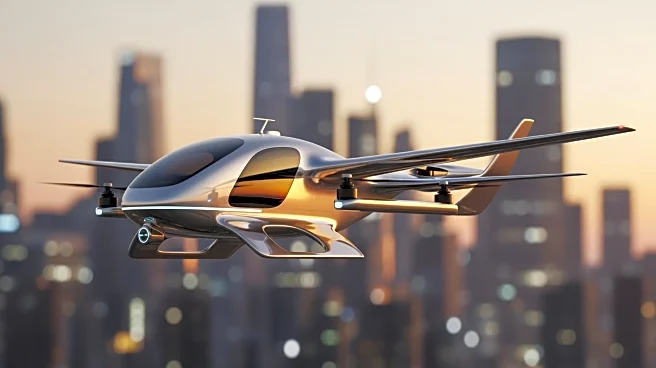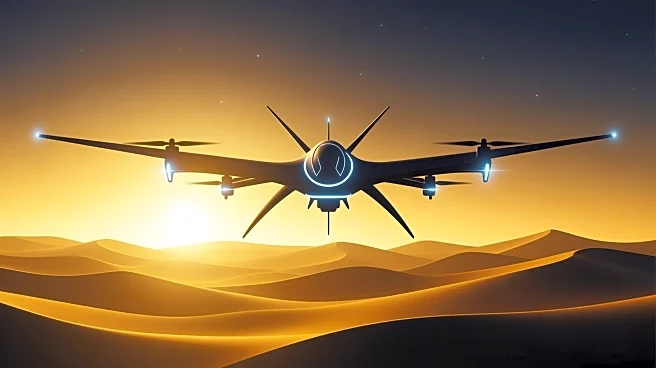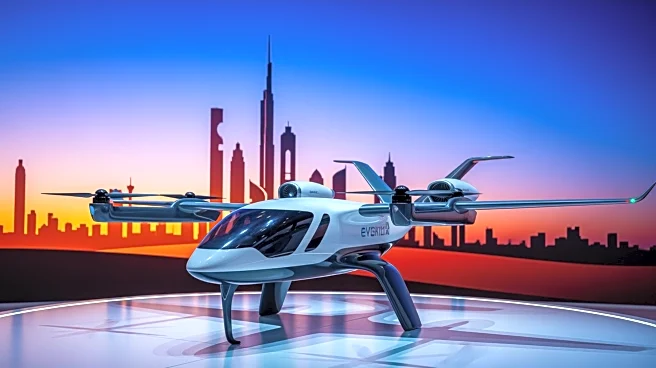What's Happening?
Caltech engineers, in collaboration with the Technology Innovation Institute (TII) in Abu Dhabi, have developed a new multimodal robot system. This system features a humanoid robot equipped with a transforming
drone, known as M4, which can launch off the robot's back. The M4 drone is capable of switching between driving and flight modes, offering a versatile approach to robotic mobility. The project, a result of a three-year collaboration, aims to integrate different locomotion modalities into a single package, enhancing the robot's ability to navigate various environments. The humanoid robot, although not the smoothest mover, can walk, tackle stairs, and navigate to the drone's destination. The M4 drone can reconfigure its body to adapt to different types of motion, such as rolling on wheels, flying, or using its wheels like feet. This development is part of a broader effort to make autonomous systems safer and more reliable.
Why It's Important?
The development of this humanoid robot with a shapeshifting drone represents a significant advancement in robotics, particularly in the field of autonomous systems. By combining different modes of locomotion, the system can potentially operate in a variety of environments, making it useful for applications in search and rescue, surveillance, and exploration. The ability to transform and adapt to different terrains and tasks enhances the robot's functionality and efficiency. This innovation could lead to more reliable and versatile robotic systems, which are crucial as robots become more integrated into daily life and industrial applications. The focus on safety-critical control and system reliability addresses key concerns about the deployment of autonomous robots in public and private sectors.
What's Next?
The collaboration between Caltech and TII is expected to continue, with further research aimed at improving the reliability and safety of autonomous systems. Future projects may explore additional functionalities and applications for the humanoid robot and its drone. As the technology matures, it could see deployment in various industries, potentially transforming how tasks are performed in challenging environments. The ongoing research will likely focus on enhancing the robot's autonomy, ensuring it can operate safely and effectively in diverse scenarios. Stakeholders in robotics and automation will be closely monitoring these developments, as they could influence future trends in the industry.
Beyond the Headlines
The integration of multiple locomotion modalities in a single robotic system raises important questions about the future of robotics and automation. As robots become more capable and autonomous, ethical considerations regarding their use and impact on society will become increasingly important. Issues such as privacy, security, and the potential displacement of human workers will need to be addressed. Additionally, the development of such advanced systems highlights the importance of interdisciplinary collaboration in pushing the boundaries of technology. The partnership between Caltech and TII exemplifies how international cooperation can drive innovation and address complex challenges in the field of robotics.











